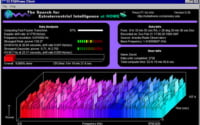Linux ‘zenmap’ | Your Guide to Installing and Using

Are you looking to install Zenmap on your Linux system but aren’t sure where to start? Many Linux users, particularly beginners, might find the task intimidating. Yet, Zenmap is worth mastering, as it will make it easy to explore and map out your network via the Linux command line. Zenmap is also readily available on most package management systems, making it a straightforward process once you know-how.
In this tutorial, we will guide you on how to install the Zenmap command on your Linux system. We will show you methods for both APT and YUM-based distributions, delve into compiling Zenmap from source, installing a specific version, and finally, how to use the Zenmap command and ensure it’s installed correctly.
So, let’s dive in and begin installing Zenmap on your Linux system!
TL;DR: How Do I Install and Use Zenmap Command in Linux?
In most Linux distributions, you can install Zenmap by running the command
sudo apt-get install zenmap. After installation, you can use Zenmap by typingzenmapin the terminal.
sudo apt-get update
sudo apt-get install zenmap
# After installation, you can check the installed version with:
zenmap --version
# Output:
# Zenmap version 7.91 ( https://nmap.org/zenmap/ )
This is a basic way to install and use the Zenmap command in Linux, but there’s much more to learn about Zenmap. Continue reading for more detailed information and advanced usage scenarios.
Table of Contents
- Understanding Zenmap and Its Installation
- Installing Zenmap from Source Code
- Installing Different Versions of Zenmap
- Using Zenmap and Verifying Its Installation
- Exploring Alternative Network Scanning Tools
- Comparing Zenmap, Nmap, and Wireshark
- Overcoming Zenmap Installation and Usage Challenges
- Unraveling Network Scanning in Linux
- Network Scanning: A Stepping Stone to Network Management and Security
- Wrapping Up: Installing Zenmap for Network Scanning
Understanding Zenmap and Its Installation
Zenmap is a popular network scanning tool that provides a graphical user interface for the more advanced command-line tool, Nmap. It allows users to discover devices on their network, identify open ports, detect security risks, and much more. Now, let’s delve into the installation process.
Installing Zenmap with APT
If you’re using a Debian-based Linux distribution like Ubuntu, you can install Zenmap using the Advanced Packaging Tool (APT). Here’s how:
sudo apt-get update
sudo apt-get install zenmap
# Check if Zenmap has been installed successfully
zenmap --version
# Output:
# Zenmap version 7.91 ( https://nmap.org/zenmap/ )
In this example, we first update the package list of your system with sudo apt-get update. Then, we install Zenmap using sudo apt-get install zenmap. Lastly, we check the installed version of Zenmap to confirm the installation.
Installing Zenmap with YUM
If you’re using a Red Hat-based distribution like Fedora or CentOS, you can use the YUM package manager to install Zenmap. Here’s how:
sudo yum update
sudo yum install zenmap
# Check if Zenmap has been installed successfully
zenmap --version
# Output:
# Zenmap version 7.91 ( https://nmap.org/zenmap/ )
In this example, we first update the package list of your system with sudo yum update. Then, we install Zenmap using sudo yum install zenmap. Lastly, we check the installed version of Zenmap to confirm the installation.
Installing Zenmap from Source Code
Sometimes, you might want to install Zenmap from source code. This can be useful if you want to modify the code or if a precompiled binary is not available for your distribution. Here’s how you can do it:
# Download the latest source code
wget https://nmap.org/dist/nmap-7.91.tar.bz2
# Extract the downloaded file
bzip2 -cd nmap-7.91.tar.bz2 | tar xvf -
# Navigate to the Nmap directory
cd nmap-7.91
# Configure the source code to ensure your system has the necessary dependencies
./configure
# Compile the source code
make
# Install Zenmap
sudo make install
# Check if Zenmap has been installed successfully
zenmap --version
# Output:
# Zenmap version 7.91 ( https://nmap.org/zenmap/ )
Installing Different Versions of Zenmap
Different versions of Zenmap might have different features or bug fixes. Therefore, you might want to install a specific version of Zenmap. Here’s how you can do it using APT, YUM, and from source code.
Installing a Specific Version with APT
# Update the package list
sudo apt-get update
# Install a specific version of Zenmap
sudo apt-get install zenmap=7.80
# Check if the correct version of Zenmap has been installed
zenmap --version
# Output:
# Zenmap version 7.80 ( https://nmap.org/zenmap/ )
Installing a Specific Version with YUM
# Update the package list
sudo yum update
# Install a specific version of Zenmap
sudo yum install zenmap-7.80
# Check if the correct version of Zenmap has been installed
zenmap --version
# Output:
# Zenmap version 7.80 ( https://nmap.org/zenmap/ )
Installing a Specific Version from Source Code
# Download the source code of a specific version
wget https://nmap.org/dist/nmap-7.80.tar.bz2
# Extract the downloaded file
bzip2 -cd nmap-7.80.tar.bz2 | tar xvf -
# Navigate to the Nmap directory
cd nmap-7.80
# Configure the source code to ensure your system has the necessary dependencies
./configure
# Compile the source code
make
# Install Zenmap
sudo make install
# Check if the correct version of Zenmap has been installed
zenmap --version
# Output:
# Zenmap version 7.80 ( https://nmap.org/zenmap/ )
Here’s a comparison of the key changes in the recent versions of Zenmap:
| Version | Key Changes |
|---|---|
| 7.91 | Added 14 new NSE scripts, enhanced the Npcap raw packet capturing/sending driver |
| 7.90 | Added 11 new NSE scripts, enhanced the Npcap raw packet capturing/sending driver |
| 7.80 | Added 11 new NSE scripts, introduced the Npcap raw packet capturing/sending driver |
Using Zenmap and Verifying Its Installation
Once you’ve installed Zenmap, you can use it to perform network scans. Here’s an example of a basic network scan:
# Perform a basic network scan
zenmap -sn 192.168.1.0/24
# Output:
# Starting Nmap 7.91 ( https://nmap.org ) at 2021-09-20 13:46 Pacific Daylight Time
# Nmap scan report for 192.168.1.1
# Host is up (0.0045s latency).
# Nmap done: 256 IP addresses (1 host up) scanned in 2.57 seconds
In this example, we use the -sn option to perform a ping scan (also known as a sweep) on the network 192.168.1.0/24. This will discover which devices are up in this network.
You can also verify that Zenmap is installed correctly by checking its version:
# Check the installed version of Zenmap
zenmap --version
# Output:
# Zenmap version 7.91 ( https://nmap.org/zenmap/ )
This command should display the installed version of Zenmap, confirming that Zenmap has been installed correctly.
Exploring Alternative Network Scanning Tools
While Zenmap is a powerful tool for network scanning, there are other tools available in Linux that can provide similar or even more advanced functionalities. Let’s explore two of them: Nmap and Wireshark.
Nmap: The Power Behind Zenmap
Nmap, or Network Mapper, is a free and open-source utility for network discovery and security auditing. Zenmap is actually a graphical user interface for Nmap, so they share many functionalities. However, Nmap can be more flexible because it allows you to use a wide range of commands directly in the terminal.
Here’s an example of how you can use Nmap to perform a network scan:
# Perform a network scan with Nmap
nmap -sn 192.168.1.0/24
# Output:
# Starting Nmap 7.91 ( https://nmap.org ) at 2021-09-20 13:46 Pacific Daylight Time
# Nmap scan report for 192.168.1.1
# Host is up (0.0045s latency).
# Nmap done: 256 IP addresses (1 host up) scanned in 2.57 seconds
In this example, we use the -sn option to perform a ping scan (also known as a sweep) on the network 192.168.1.0/24. This will discover which devices are up in this network. This command is similar to the one used with Zenmap, demonstrating the underlying power of Nmap.
Wireshark: Deep Dive into Network Traffic
Wireshark is a free and open-source packet analyzer. It allows you to see what’s happening on your network at a microscopic level. Wireshark can be used to troubleshoot network issues, examine security problems, debug protocol implementations, and learn network protocol internals.
Here’s an example of how you can use Wireshark to capture packets on your network:
# Start capturing packets with Wireshark
wireshark -i eth0 -k
In this example, we use the -i option to specify the network interface to capture packets from (eth0 in this case), and the -k option to start the capture immediately.
Please note that Wireshark provides a graphical user interface, so you’ll see the packets being captured in a new window. This allows you to analyze the packets in real time or save them for later analysis.
Comparing Zenmap, Nmap, and Wireshark
| Tool | Advantages | Disadvantages |
|---|---|---|
| Zenmap | Easy to use, graphical user interface, suitable for beginners | Limited functionality compared to Nmap and Wireshark |
| Nmap | Powerful, flexible, suitable for advanced users | Command-line interface, steeper learning curve |
| Wireshark | Detailed packet analysis, graphical user interface | Might be overwhelming for beginners |
While Zenmap is a great tool for beginners, Nmap and Wireshark provide more advanced functionalities that can be useful for experienced users. Therefore, we recommend starting with Zenmap, and then moving on to Nmap and Wireshark as you become more comfortable with network scanning.
Overcoming Zenmap Installation and Usage Challenges
While installing and using Zenmap in Linux can be a straightforward process, you might occasionally encounter issues. Let’s explore some common challenges and their solutions.
Zenmap Installation Errors
One common issue is encountering errors during the installation process. This can be due to a variety of reasons, such as missing dependencies, insufficient permissions, or network issues.
If you encounter an error like E: Unable to locate package zenmap during installation, it might be because your package list is outdated. You can update it with the following command:
sudo apt-get update
# Output:
# Hit:1 http://archive.ubuntu.com/ubuntu bionic InRelease
# Get:2 http://archive.ubuntu.com/ubuntu bionic-updates InRelease [88.7 kB]
# ... (more lines) ...
# Fetched 1,024 kB in 2s (514 kB/s)
# Reading package lists... Done
This command updates the package list of your system, ensuring that it can locate the Zenmap package.
Zenmap Usage Errors
Another common issue is encountering errors when using Zenmap. For example, you might see an error like bash: zenmap: command not found. This usually means that Zenmap is not installed or not in your PATH.
You can check if Zenmap is installed with the following command:
zenmap --version
# Output:
# Zenmap version 7.91 ( https://nmap.org/zenmap/ )
If Zenmap is installed, this command will display its version. If not, you’ll need to install Zenmap (as shown in the previous sections of this guide).
If Zenmap is installed but not in your PATH, you might need to add it manually. Here’s how you can do it:
# Add Zenmap to your PATH
echo 'export PATH=$PATH:/path/to/zenmap' >> ~/.bashrc
source ~/.bashrc
# Check if Zenmap is now in your PATH
which zenmap
# Output:
# /path/to/zenmap
In this example, replace /path/to/zenmap with the actual path to the Zenmap executable. This command adds Zenmap to your PATH and applies the changes immediately.
Remember, while Zenmap is a powerful tool, it’s important to use it responsibly and ethically. Always ensure you have permission to scan the network or device you’re targeting to avoid legal issues.
Unraveling Network Scanning in Linux
Network scanning is a vital part of system administration and security in Linux. It allows administrators to discover devices on their network, identify open ports, detect security risks, and much more. Zenmap, as a network scanning tool, plays a key role in this process.
Why Network Scanning Matters
Network scanning provides a wealth of information about your network. It can reveal the IP addresses of devices on your network, the services those devices are offering, and the ports that are open and potentially vulnerable to attacks.
# An example of a network scan
nmap -sn 192.168.1.0/24
# Output:
# Starting Nmap 7.91 ( https://nmap.org ) at 2021-09-20 13:46 Pacific Daylight Time
# Nmap scan report for 192.168.1.1
# Host is up (0.0045s latency).
# Nmap done: 256 IP addresses (1 host up) scanned in 2.57 seconds
In this example, we use the -sn option to perform a ping scan (also known as a sweep) on the network 192.168.1.0/24. This will discover which devices are up in this network. The output shows the IP address of a device that is up (192.168.1.1), demonstrating the power of network scanning.
The Role of Zenmap in Network Scanning
Zenmap is a powerful tool for network scanning. It provides a graphical user interface for the more advanced command-line tool, Nmap. This makes it more user-friendly and accessible, especially for beginners.
However, Zenmap is not just a pretty face for Nmap. It also adds functionalities like network topology visualization, which allows you to see the structure of your network in a graphical way. This can be extremely useful for understanding complex networks.
Network Scanning for System Administration and Security
Network scanning is crucial for both system administration and security. For system administrators, it provides a way to discover and manage devices on their network. For security professionals, it allows them to identify potential vulnerabilities and protect their network against attacks.
For example, by discovering open ports with Zenmap, you can identify services that shouldn’t be exposed and close them. By identifying the operating system of a device, you can ensure it’s up-to-date and patched against known vulnerabilities.
# An example of a port scan
nmap -p 1-65535 192.168.1.1
# Output:
# Starting Nmap 7.91 ( https://nmap.org ) at 2021-09-20 13:46 Pacific Daylight Time
# Nmap scan report for 192.168.1.1
# Host is up (0.0045s latency).
# Not shown: 65534 closed ports
# PORT STATE SERVICE
# 22/tcp open ssh
# Nmap done: 1 IP address (1 host up) scanned in 2.57 seconds
In this example, we use the -p option to perform a port scan on the device 192.168.1.1. This will discover which ports are open on this device. The output shows that port 22 (SSH) is open, demonstrating the importance of network scanning for security.
Network Scanning: A Stepping Stone to Network Management and Security
Mastering Zenmap and understanding network scanning is just the beginning. These skills are fundamental to larger tasks in network management and security. Let’s explore how.
Network Monitoring: Keeping an Eye on Your Network
Network scanning is a powerful tool for network monitoring. It allows you to keep an eye on your network, ensuring that all devices are up and running, and that no unauthorized devices have connected to your network.
# An example of a network scan for network monitoring
nmap -sn 192.168.1.0/24
# Output:
# Starting Nmap 7.91 ( https://nmap.org ) at 2021-09-20 13:46 Pacific Daylight Time
# Nmap scan report for 192.168.1.1
# Host is up (0.0045s latency).
# Nmap done: 256 IP addresses (1 host up) scanned in 2.57 seconds
In this example, we use the -sn option to perform a ping scan (also known as a sweep) on the network 192.168.1.0/24. This will discover which devices are up in this network. You can run this scan regularly to monitor your network.
Intrusion Detection: Guarding Your Network
Network scanning is also a crucial part of intrusion detection. By identifying open ports and services, you can detect potential vulnerabilities and protect your network against attacks.
# An example of a port scan for intrusion detection
nmap -p 1-65535 192.168.1.1
# Output:
# Starting Nmap 7.91 ( https://nmap.org ) at 2021-09-20 13:46 Pacific Daylight Time
# Nmap scan report for 192.168.1.1
# Host is up (0.0045s latency).
# Not shown: 65534 closed ports
# PORT STATE SERVICE
# 22/tcp open ssh
# Nmap done: 1 IP address (1 host up) scanned in 2.57 seconds
In this example, we use the -p option to perform a port scan on the device 192.168.1.1. This will discover which ports are open on this device. If you find a port that shouldn’t be open, you can investigate further to detect potential intrusions.
Further Resources for Network Scanning Mastery
If you want to learn more about network scanning, network monitoring, and intrusion detection, here are some resources that can help:
- Nmap Network Scanning – The official guide to the Nmap Security Scanner, a free and open source utility used by millions of people for network discovery, administration, and security auditing.
Wireshark User’s Guide – A guide to using Wireshark, a free and open-source packet analyzer used for network troubleshooting, analysis, software and communications protocol development.
Snort User Manual – A manual for using Snort, a free and open-source network intrusion prevention system and network intrusion detection system.
Wrapping Up: Installing Zenmap for Network Scanning
In this comprehensive guide, we’ve explored how to install and use Zenmap, a powerful network scanning tool, in Linux.
We started with the basics, learning how to install Zenmap using package managers like APT and YUM. We also covered how to install Zenmap from source code and how to install specific versions. We then moved on to using Zenmap for network scanning, providing practical examples to enhance your understanding.
Along the way, we tackled common challenges you might face when using Zenmap, such as installation errors and usage errors, providing you with solutions and workarounds for each issue.
We also looked at alternative approaches to network scanning in Linux, comparing Zenmap with other tools like Nmap and Wireshark. Here’s a quick comparison of these tools:
| Tool | Advantages | Disadvantages |
|---|---|---|
| Zenmap | Easy to use, graphical user interface, suitable for beginners | Limited functionality compared to Nmap and Wireshark |
| Nmap | Powerful, flexible, suitable for advanced users | Command-line interface, steeper learning curve |
| Wireshark | Detailed packet analysis, graphical user interface | Might be overwhelming for beginners |
Whether you’re just starting out with Zenmap or you’re looking to level up your network scanning skills, we hope this guide has given you a deeper understanding of Zenmap and its capabilities.
With its balance of ease of use and powerful functionality, Zenmap is a valuable tool for network scanning in Linux. Happy scanning!


